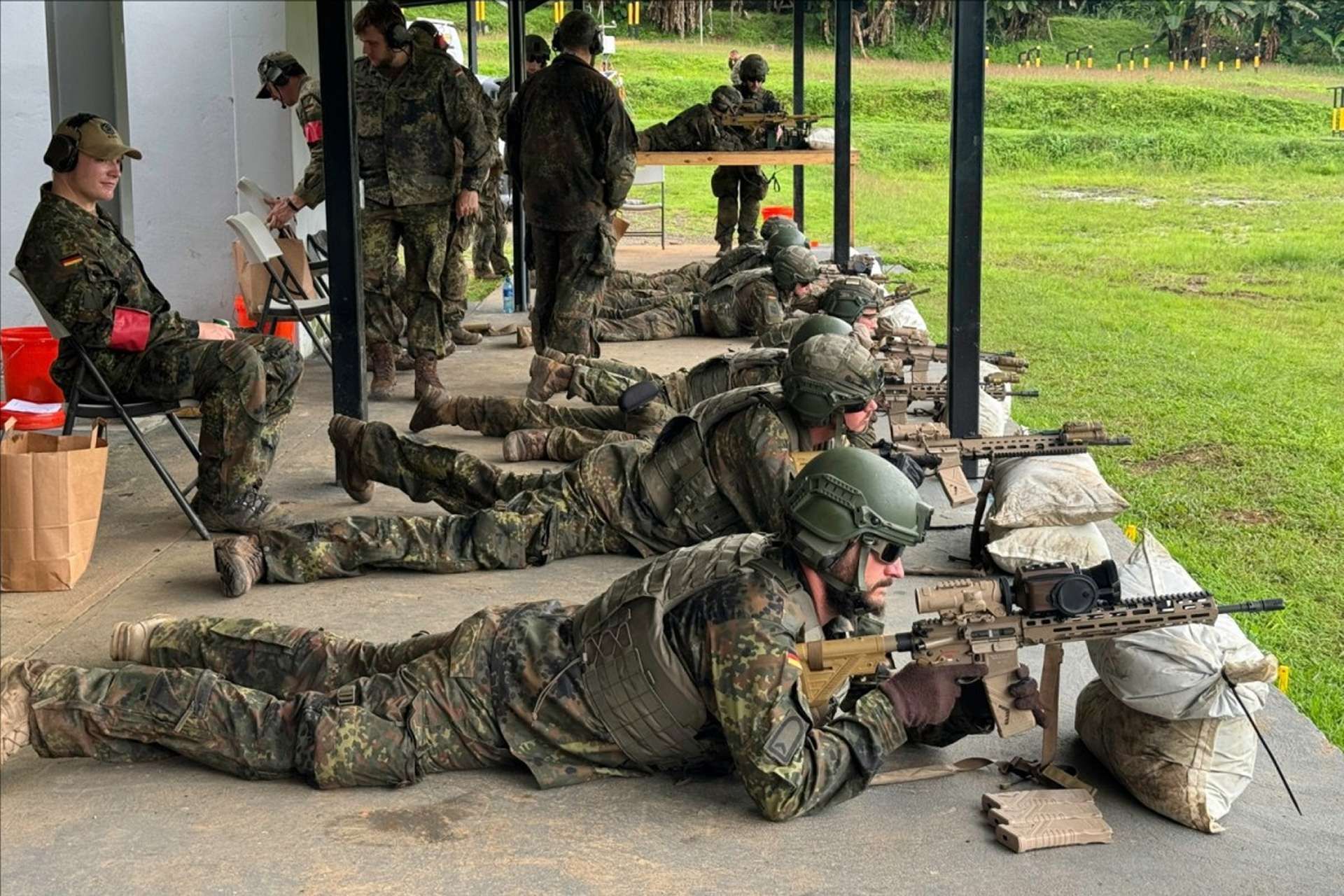Breaking News
Germany Tests G95 Rifles at US Army's Tropical Regions Test Center.
The German armed forces, known as the Bundeswehr, recently tested both variants of their new G95 assault rifle at a Panamanian center frequently used by the U.S. Army's Tropical Regions Test Center (TRTC). These tests are part of the Bundeswehr's ongoing efforts to evaluate its equipment in various extreme environments.
Follow Army Recognition on Google News at this link

The G95, based on Heckler & Koch’s HK416A8, comes in two versions: one with a 16.5-inch barrel and the other with a 14-inch barrel, both chambered for NATO 5.56mm ammunition. (Picture source: US DoD)
In addition to testing the G95 rifle, the Bundeswehr also took the opportunity to test its G22A2 sniper rifle, as well as the MG4 and MG5 machine guns. During the trials, 55 German soldiers navigated a muddy jungle trail, facing challenging conditions that included streams, dense vegetation, and thorny vines. This environment was designed to replicate the difficult conditions soldiers might encounter during real-world missions in tropical regions.
Sergeant Major Ernest Tretow of the Bundeswehr praised the quality of the jungle course, noting that the soldiers conducted live-fire exercises and tested night vision goggles. "The jungle trail and its tactical targets were excellent," he said. "We tested the new night vision goggles at night in the jungle and used the trail for live fire during the day."
The G95, based on Heckler & Koch’s HK416A8, comes in two versions: one with a 16.5-inch barrel and the other with a 14-inch barrel, both chambered for NATO 5.56mm ammunition. The Bundeswehr's version includes some modifications, notably to the grip, trigger guard, and cheek rest, compared to the civilian model.
The tropical tests in Panama are part of the Bundeswehr's ongoing evaluation efforts. Previous tests had been conducted in more temperate environments, such as in the Almeria region of Spain, where hot conditions last only a few weeks each year. The soldiers found that Panama's conditions better represented a true jungle environment, which they sought for more rigorous equipment evaluations.
The Bundeswehr had also tested weapons in Hawaii but felt that the subtropical conditions there did not fully reflect the extreme challenges of a true jungle. The humid, muddy conditions of Panama provided the ideal testing ground for their new equipment.
Sergeant Major Michael Diehl of the Bundeswehr expressed satisfaction with the test site and the support provided by the TRTC team. "The test site was exactly what we were looking for, and the support from the Tropical Regions Test Center team was outstanding," said Diehl. "We encountered no problems during the weapons testing."
The German military has long maintained a relationship with U.S. Army testing facilities. Ten years ago, they tested the MG5 machine gun at the Yuma Test Center, part of the U.S. Army's Yuma Proving Ground (YPG), under the supervision of the Army Test and Evaluation Center (ATEC). The broad range of testing environments offered by YPG—including desert, tropical, and arctic regions—has allowed for comprehensive evaluations of Bundeswehr equipment.
Colonel John Nelson, YPG commander, emphasized the importance of these collaborative efforts with NATO partners. "It was an excellent opportunity for security cooperation and support of our NATO partners to test their equipment in the challenging natural environment of the tropics," Nelson said. He also noted that the Bundeswehr plans to continue its testing program with evaluations scheduled at the Arctic Regions Test Center this winter.
With the success of this series of tests, further evaluations for the Bundeswehr are expected at YPG and its affiliated facilities in the future.

The Bundeswehr recently tested both variants of their new G95 assault rifle. (Picture source: US DoD)


























